Many whale species are recovering faster than expected, and new research is finding that healthy whale populations store TONS of carbon in addition to being just plain awesome.
Tell major newspapers to report more on this Great Whale Renaissance!
Touch or scan the QR code below to take today’s action in the app and earn trees!
Or take action on the Internet:
Reasons For Hope
In the twentieth century, the great baleen whales of Earth's ocean teetered on the brink of extinction due to a rapacious whaling industry. (This was in large part driven by the Soviet Union's quota system mandating a pointless mass whale slaughter even while there wasn't much demand for whale products). Fortunately, since all commercial whaling was banned in 1986 (after a long and epic series of direct action campaigns by activists, among other factors) many species have recovered magnificently! Plus, more and more research has found that whales play a vital role in sequestering lots of carbon, so more of them is great news for the climate.
Blue whales in the Seychelles
In the 1960s, the brutal Soviet whaling fleet illegally killed over 500 blue whales in the waters around the Seychelles archipelago, part of the decades-long global slaughter of Earth’s cetaceans. There were an estimated 340,280 blue whales in 1890, but the industrialized whaling of the twentieth century brought their numbers down to just 4,727 by 2001. Now, blue whales have returned to the waters of the Seychelles! Researchers and filmmakers caught them on camera, and a year of underwater microphone recordings revealed their songs (here’s the study), revealing that several blue whales (the exact number is still unknown) are spending months in Seychelles waters during the breeding season. This is part of the growing recovery of blue whale numbers throughout the World Ocean; there are an estimated up to 15,000 and increasing as of 2023. Great news!
“It turns out if you stop killing animals on mass scales and you give them a chance to rebound, they can recover.”
-Dr. Kate Stafford
Humpback whales off South Georgia
A new study has found that humpback whales (Megaptera novaeangliae) have returned to Cumberland Bay on the remote South Atlantic island of South Georgia, once a major feeding ground for the species before it became a whaling center. In the early 20th century, whalers stationed on South Georgia killed over 24,000 humpback whales in just 12 years. Now, the historic humpback feeding site has been rediscovered and recolonized at what looks to be close to pre-whaling population densities; researchers found that 17 humpback whales were observed in Cumberland Bay in January 2019, the exact same number that were killed in the area by an early whaling expedition in January 1905. Great news!
If you can make it in New York…
It’s long been known that humpback whales have returned to New York Harbor, lured by abundant supplies of menhaden fish amidst lower water pollution. Now, new research has found that just a bit further offshore, rapidly recovering fin whales (formerly one of the species most devastated by the industrialized whaling of the 1900s) are thriving year-round in the New York Bight waters off New York and New Jersey. Researchers’ passive acoustic monitoring buoys detected fin whale song in every month of the year, likely indicating that the fin whales both forage and breed in the area, off the coast of one of humanity’s great cities. Yet another step in the epic global cetacean renaissance—long may it continue! Great news.
“While they may not be seen as close to shore as other whales and dolphins, it is truly remarkable that the second largest animal to have ever lived on this earth is here in the New York Bight year-round off our coasts.”
-Dr. Howard Rosenbaum, Wildlife Conservation Society
Fin whales of the Antarctic
Southern Ocean fin whales (Balaenoptera physalus quoyi) were devastated by industrial whaling, with an estimated 700,000 individuals killed between 1904 and 1976, reducing the population to somewhere below 8,000. But since the catch quota for fin whales was set to zero in 1976 and all commercial whaling was banned in 1986, the species has been slowly recovering. Now, new feeding groups witnessed by the Alfred Wegener Institute whale research team give hope that southern fin whales are finally recovering their historic population density.
An expedition on the icebreaker Polarstern in 2018 found groups of 50 to 70 fin whales feeding on krill together near Elephant Island off the coast of the Antarctic Peninsula, the largest ever recorded for the species in modern times. A return the next year observed groups of up to 150 fin whales feeding together, resembling the “from horizon to horizon” densities described by early Antarctic explorers in the pre-whaling period. (Pictured, above, from video).
Whales are climate superheroes!
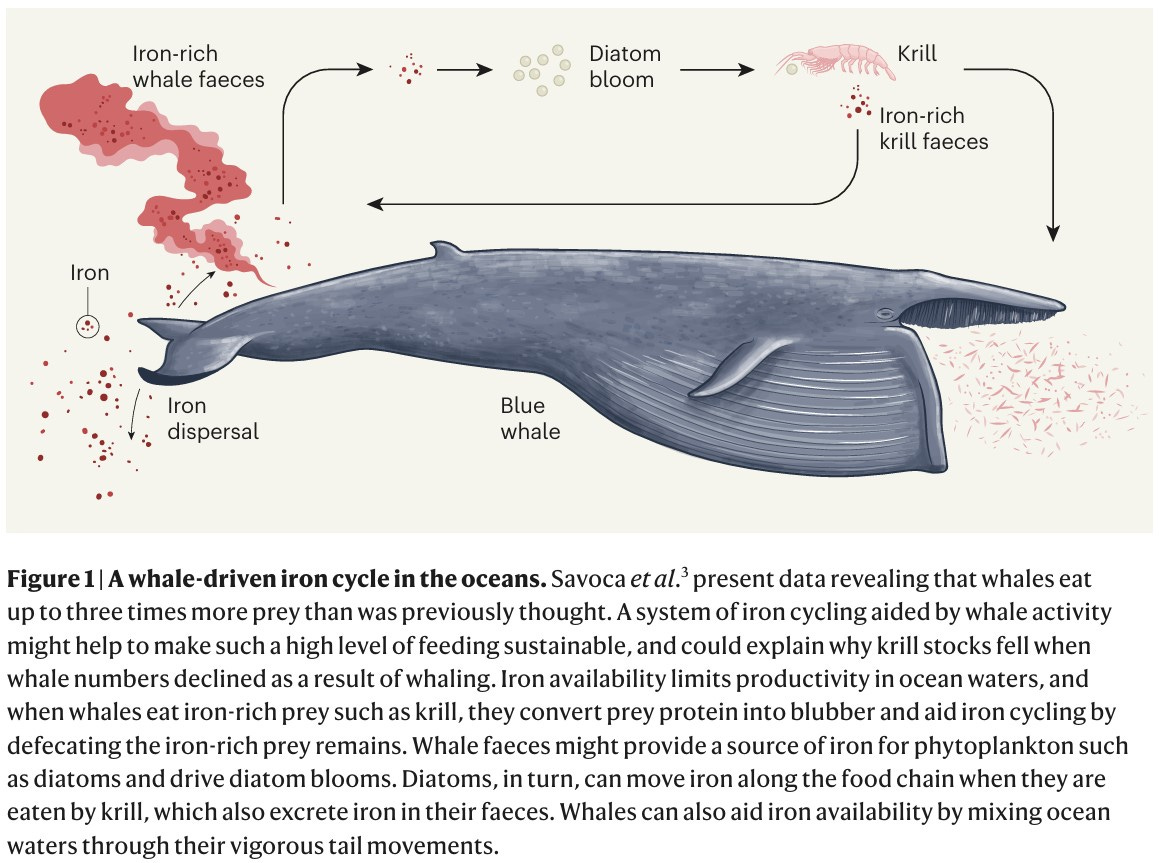
We may be returning to the epic days of cetacean superabundance! This isn’t just great news for the species, it’s good news for overall Antarctic ecosystem functioning and the fight to stabilize Earth’s climate.
It’s been known for a while that whales fertilize the environment with their plumes of iron-rich feces, allowing blooms of phytoplankton to grow, providing food at the base of the ecosystem (for krill especially!) and sequestering lots of CO2.
Beyond that, in recent years new research has indicated that baleen whales are much more important to ocean ecosystems than we thought, and that the planet could still really use a lot more whales. The most fascinating new finding, from which stems lots of new conclusions about how Earth's oceans work, is that whales eat three times more than previously thought.
You'd think that humanity would know how much whales eat by now, but we only had estimates before this new study. The researchers started in 2010 and affixed motion trackers (via suction cups) to 321 individual whales from 7 different species of baleen whale, recording over 70,000 feeding events. They found that one adult blue whale eats up to 16 metric tons of krill and other food per day-an amount the mass of three African elephants. This supports an entire marine ecosystem, with the iron plumes from their feces fertilizing phytoplankton that in turn provide food for krill and other whale prey species. (See diagram above).
We knew that whales and whale poop had this effect, but when you scale it up by the amount that we now know whales eat, it looks like whale poop is the key factor determining the productivity of Earth's oceans. And this perfectly solves the observed "krill paradox," where krill numbers in Antarctic waters decreased even though their major predators, whales, had been brought to the brink of extinction - krill need whales to fertilize phytoplankton for them to eat!
It looks as though Earth has been substantially "under-whaled" for the last few decades, and that there's immense room for a more productive, life-rich, and carbon-sucking ocean in the post-whaling era. Preliminary calculations estimate that returning the whole Southern Ocean to historical whale numbers, with the concomitant phytoplankton boom, would be the equivalent of adding an entire continent's worth of new forests. And it now seems like that amazing ecological revival is well and truly underway! Truly excellent news.





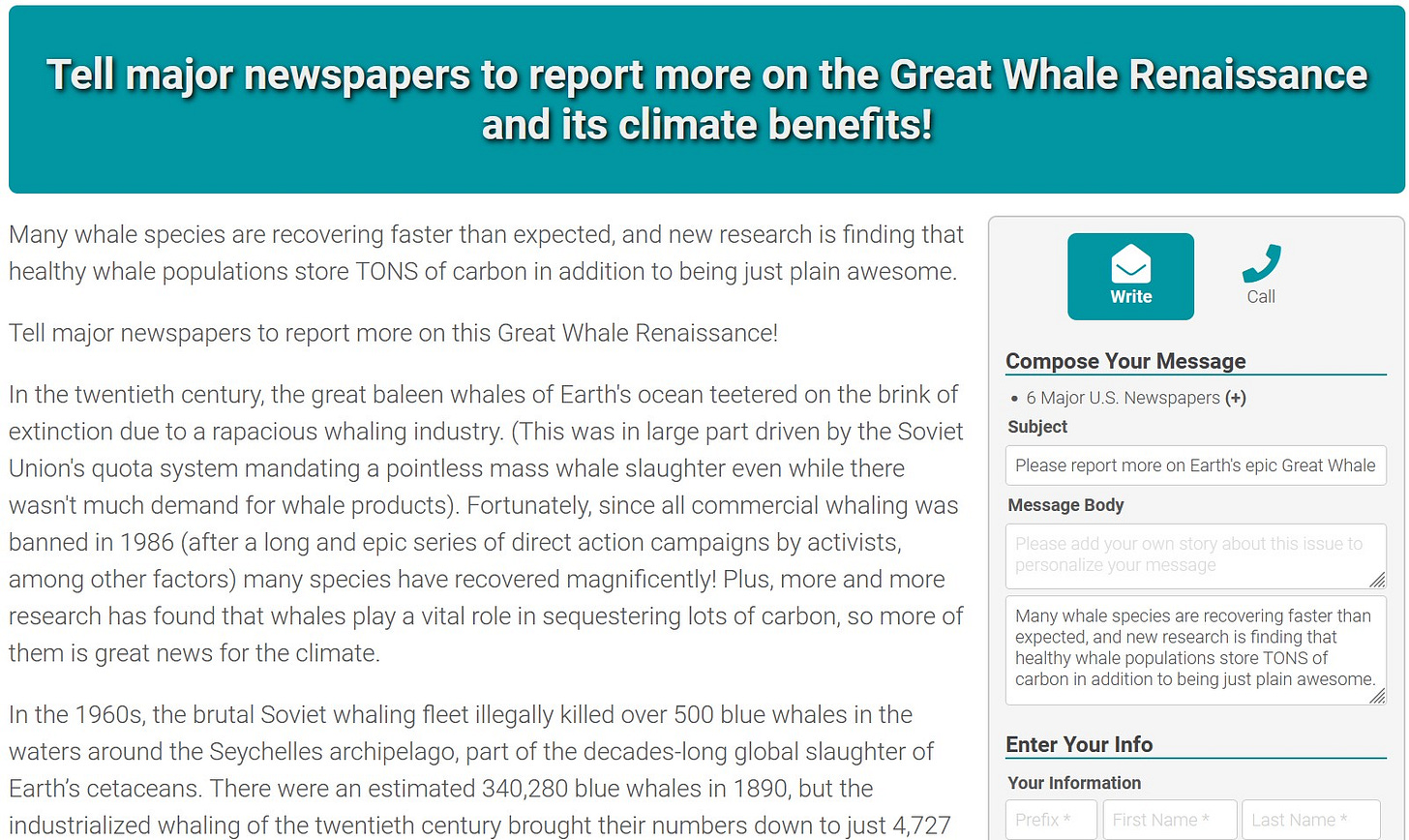
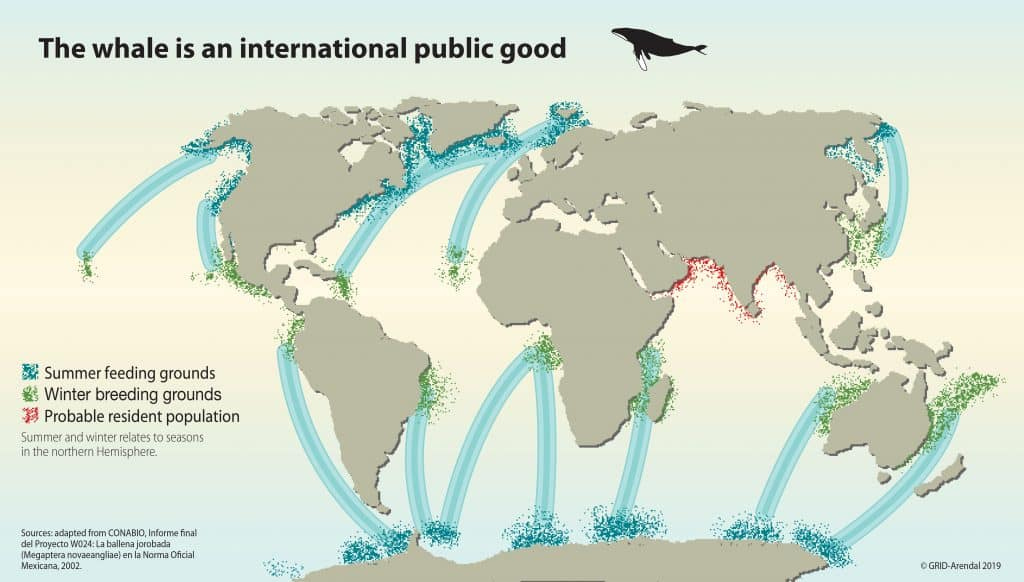
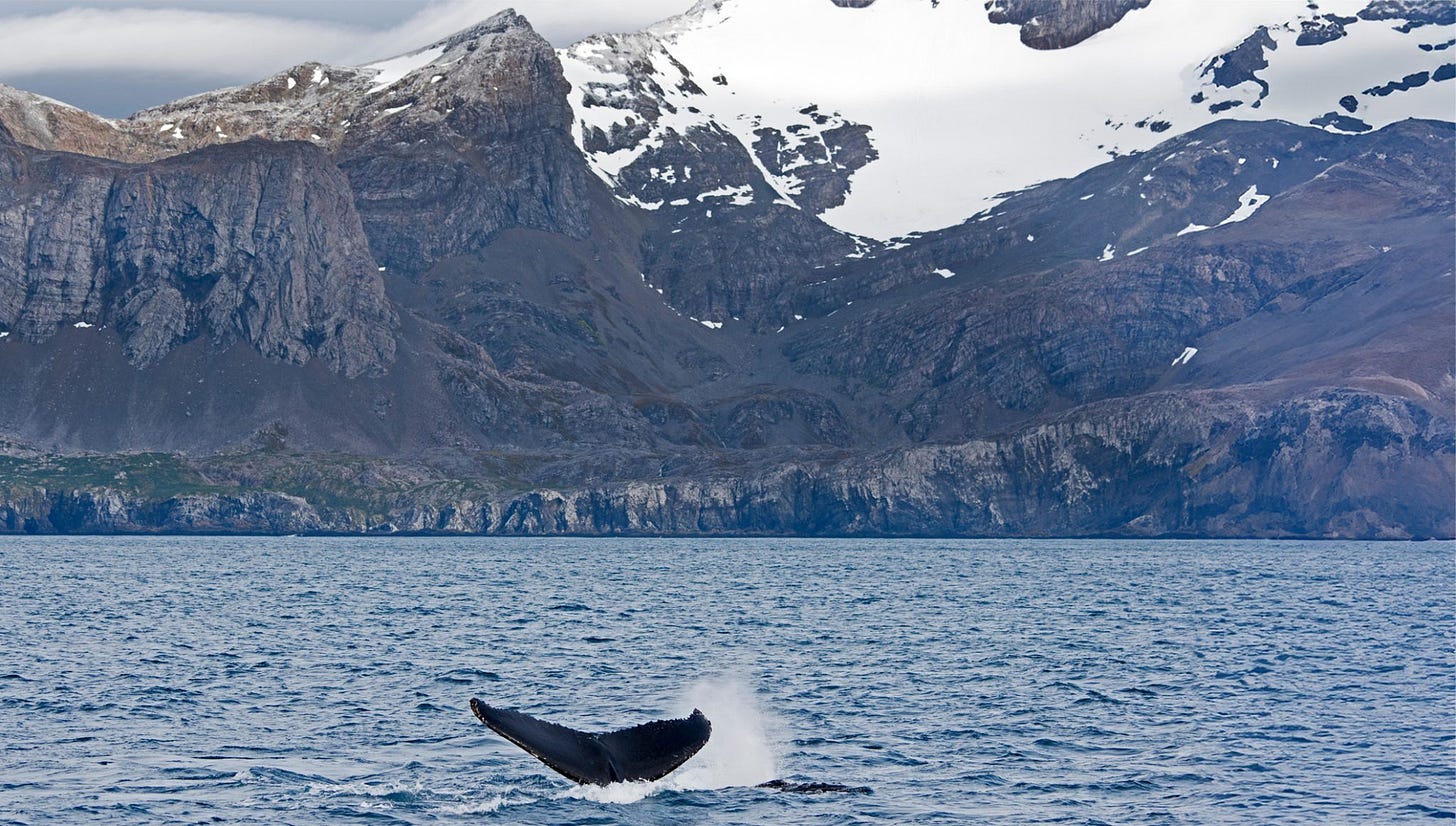
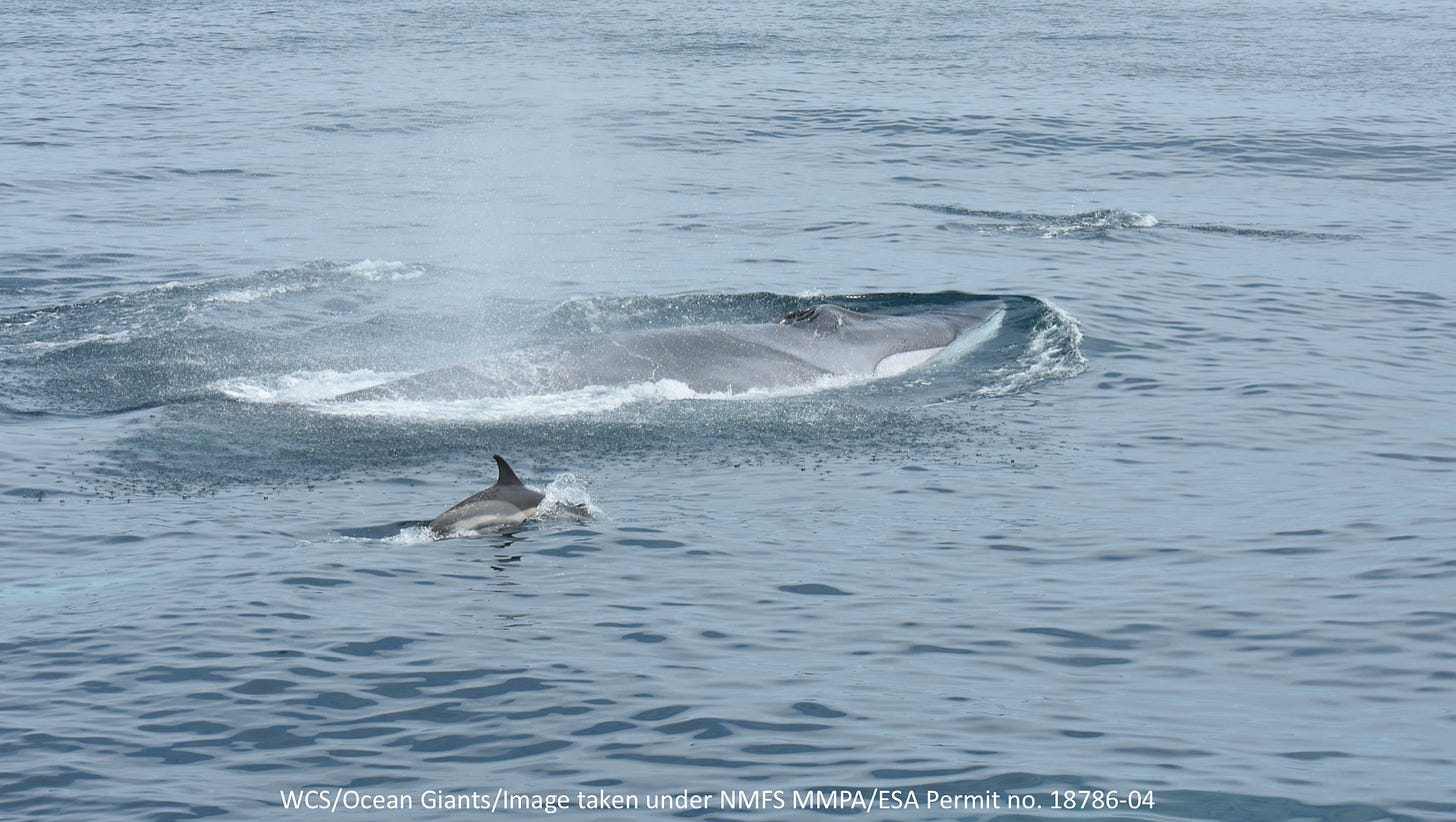

Really great article! A good reminder too of the vital interactions between biodiversity and climate change. Going into COP16 in Colombia this fall, we have to keep the biodiversity train moving. Why do iron fertilization of the oceans by hand when we could let the whales thrive and do it naturally!
A rare, happy article, and a fun read. It would be great to see the math that equates the whale population renaissance to a new "continent" of trees, and compare that to, say, the impact of outlawing natural gas stoves in the US.